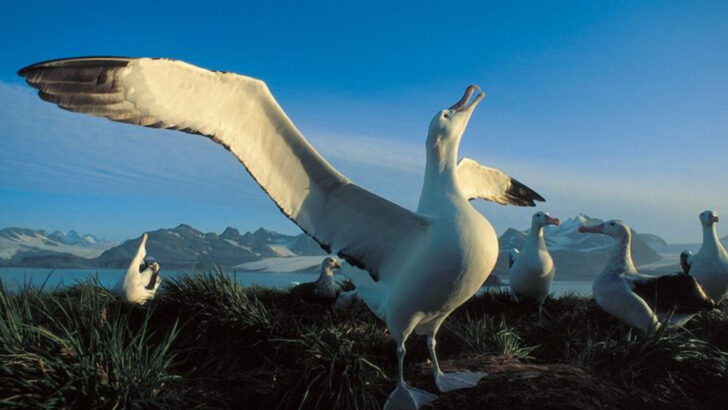They don’t just fly—they dominate the skies. Some birds are so massive, their wings stretch wider than a pickup truck. These flying giants can glide across oceans, ride thermals over mountains, and cast shadows that stop people in their tracks. With wingspans over 10 feet, they aren’t your average backyard visitors. They’re powerful, graceful, and built for long-distance flight on a scale that’s almost hard to believe. From legendary albatrosses to thunderous condors, these birds rule the air with size alone. And once you see one in flight, it’s a sight you won’t forget.
Wandering Albatross
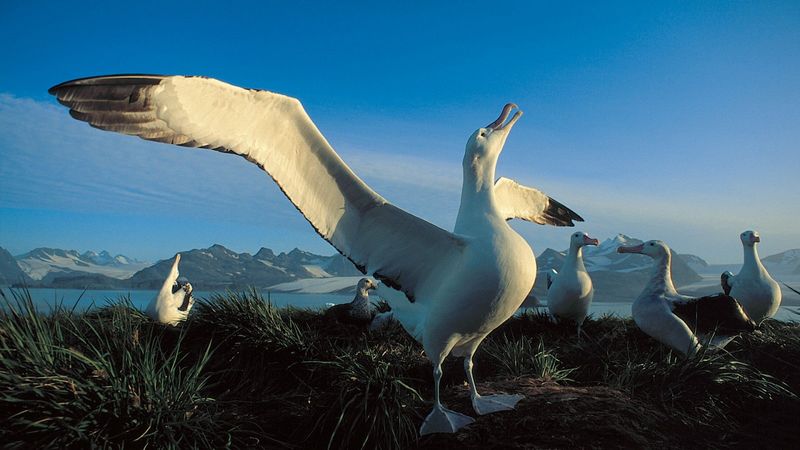
With wings that can stretch up to an incredible 11 feet 6 inches, the Wandering Albatross is a true champion of the skies. Imagine gliding effortlessly over the vast ocean, covering thousands of miles without a single flap. The Wandering Albatross does just that, using its massive wings to harness wind currents. It’s a breathtaking sight, especially when seen elegantly soaring above remote oceanic waters. Known for its long migrations, this bird spends most of its life in flight. Did you know? These majestic albatrosses can live over 50 years, symbolizing endurance and grace.
Southern Royal Albatross
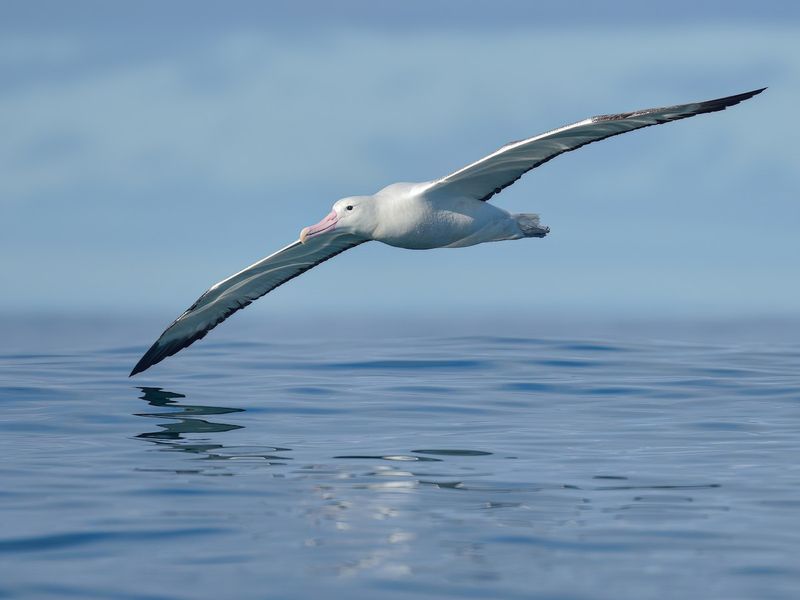
The Southern Royal Albatross, with a wingspan reaching between 11 to 11.5 feet, is a dominant presence in the Antarctic skies. Graceful yet commanding, this bird’s flight is a marvel of aerodynamic efficiency. It uses its considerable wings to float above the ocean, searching for squid and fish. Its elegance is paired with tenacity, as it braves the harshest weather conditions. Curious fact: Southern Royal Albatrosses perform a unique and elaborate courtship dance. Their endurance during long flights and remarkable mating rituals make them truly extraordinary creatures of the air.
Northern Royal Albatross
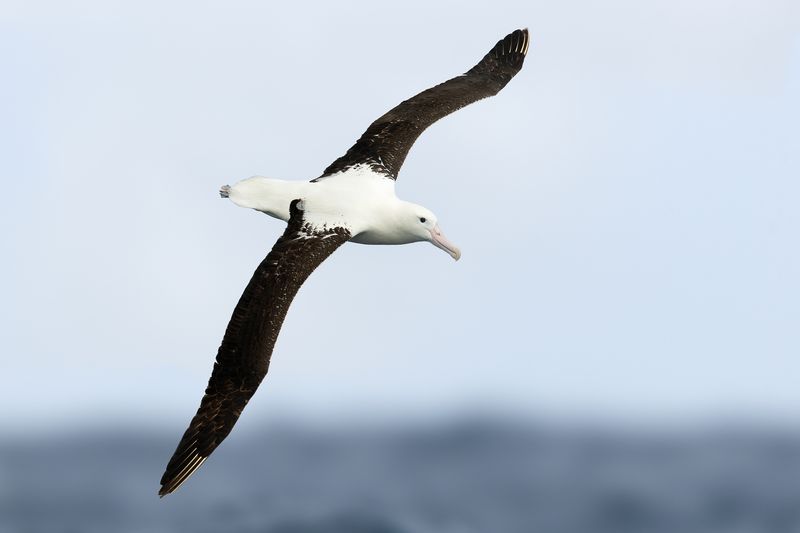
Equipped with wings that span up to 11 feet, the Northern Royal Albatross is a majestic spectacle over southern seas. It combines power with grace as it rides wind currents, traveling vast distances. These birds are known for their strong pair bonds, often returning to the same partner each breeding season. The Northern Royal Albatross nests in colonies on remote islands, adding to their mystique. Did you know? They are one of the few albatross species to have a designated breeding ground exclusively in New Zealand. Their long flights reflect a life ruled by the winds.
Great White Pelican
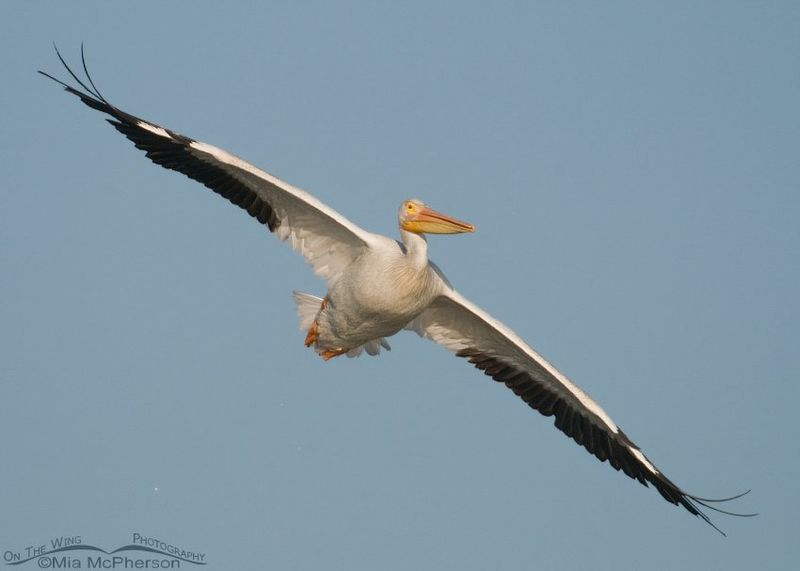
The Great White Pelican, with its wings stretching from 10 to 11 feet, is an impressive figure on the water. These birds are often seen fishing in groups, working together to corral fish. With its massive bill and throat pouch, the pelican is uniquely adapted to its aquatic lifestyle. Watching a Great White Pelican take off is akin to witnessing a ballet – its wings beat slowly, lifting vast frames into the air. Fun fact: Although clumsy on land, pelicans are exquisite flyers. They are living reminders of the beauty and complexity of avian life near water.
Andean Condor

The Andean Condor, with its wingspan reaching up to 10.5 feet, is often seen gracefully navigating the heights of the Andes. Revered in many cultures, this bird is a symbol of power and freedom. The condor’s impressive wings allow it to glide for hours with minimal effort, scouring the landscape for carrion. As one of the largest flying birds, it plays a vital role in the ecosystem by cleaning up carcasses. A fascinating tidbit: Andean Condors can live for over 70 years in the wild, representing longevity and resilience.
California Condor
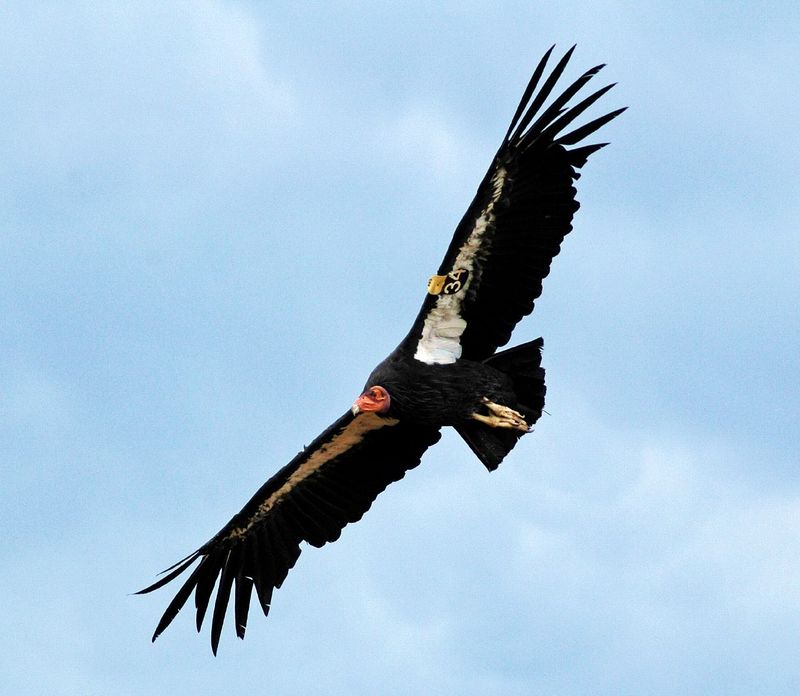
The California Condor, stretching its wings over 10 feet, is a majestic presence in the skies above rocky canyons. Once on the brink of extinction, conservation efforts have helped its numbers recover. This bird’s wide wings enable it to soar effortlessly, searching for food. Its presence signals a healthy environment, as condors are sensitive to ecological changes. Did you know? California Condors are one of the world’s longest-living birds, with some individuals reaching over 60 years. This comeback story is a testament to the resilience and adaptability of nature.
Whooper Swan

The Whooper Swan, with a wingspan reaching around 10 feet, presents a picture of elegance and power on northern lakes. Famous for their whooping calls, these swans are also known for their striking beauty. Their migratory journeys stretch across continents, showcasing their strength and stamina. On water, they glide with an effortless grace, while on land, they display a dignified presence. An interesting fact: Whooper Swans are the national bird of Finland, symbolizing purity and grace. Their presence in northern landscapes adds a touch of magic to the natural world.
Trumpeter Swan
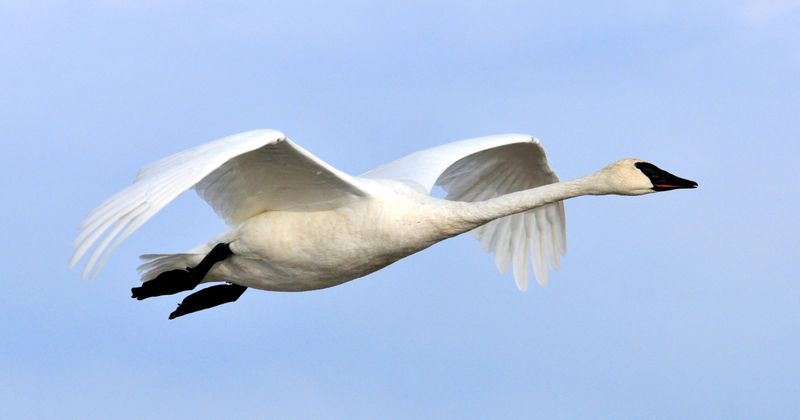
North America’s heavyweight swan, the Trumpeter Swan, boasts a wingspan that reaches between 9.5 to 10 feet and occasionally exceeds it. Known for their resonant calls, these swans are often seen in tranquil lake settings. Their takeoff is a powerful spectacle, with strong wingbeats echoing across the water. The Trumpeter Swan’s return from near-extinction is a success story in wildlife conservation. Curious fact: These swans are among the heaviest flying birds, yet they maintain a grace that is mesmerizing. Watching them is like witnessing nature’s symphony in motion.
Marabou Stork

The Marabou Stork, with a wingspan ranging from 9 to 10 feet, casts an unmistakable silhouette over the African savanna. Despite its ungainly appearance, this scavenger plays a crucial role in the ecosystem, cleaning up after carnivores. The stork’s large frame and bald head might not win any beauty contests, but its ecological importance is profound. In flight, it transforms into a graceful figure, soaring effortlessly across the skies. Did you know? Marabou Storks are known as “undertaker birds” due to their somber appearance and scavenging nature.
Great Frigatebird

The Great Frigatebird, although exceptionally slim, boasts a wingspan that often crosses 10 feet. With its distinct long wings and forked tail, it is a master of the air, rarely landing on water. This bird is known for its aerial acrobatics, often seen harassing other birds to steal their catch. Its presence is a common sight in tropical skies, where it patrols the ocean’s surface. Fun fact: Great Frigatebirds have the longest parental care period among birds, attending to their young for over a year. Their agility and persistence are legendary.

